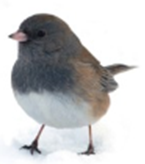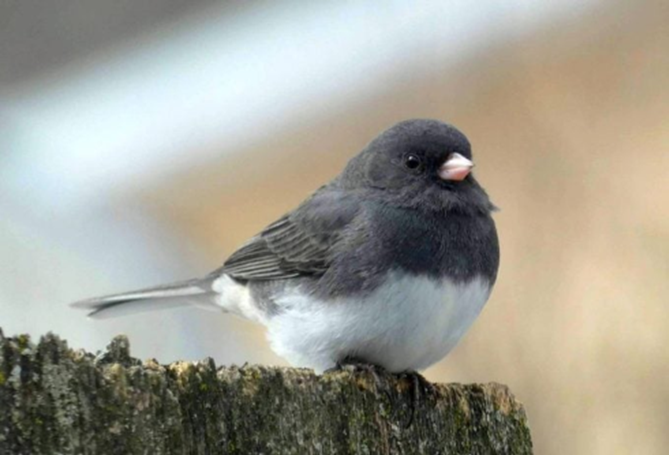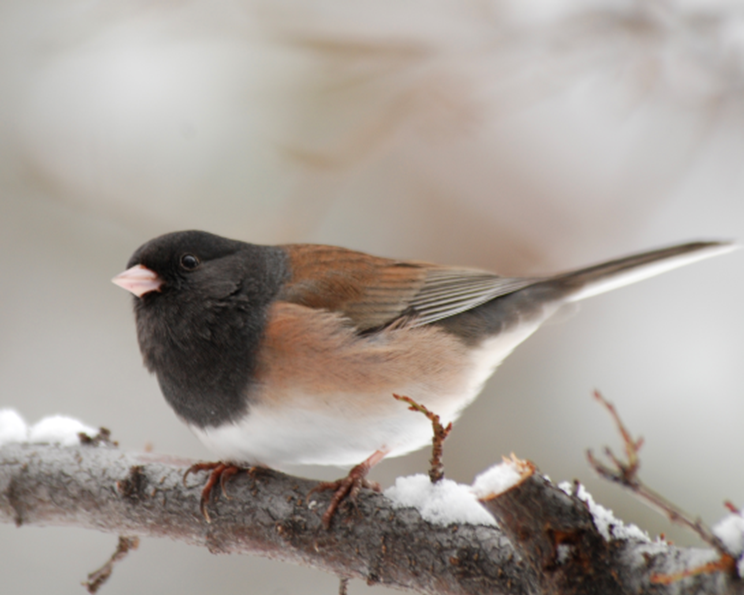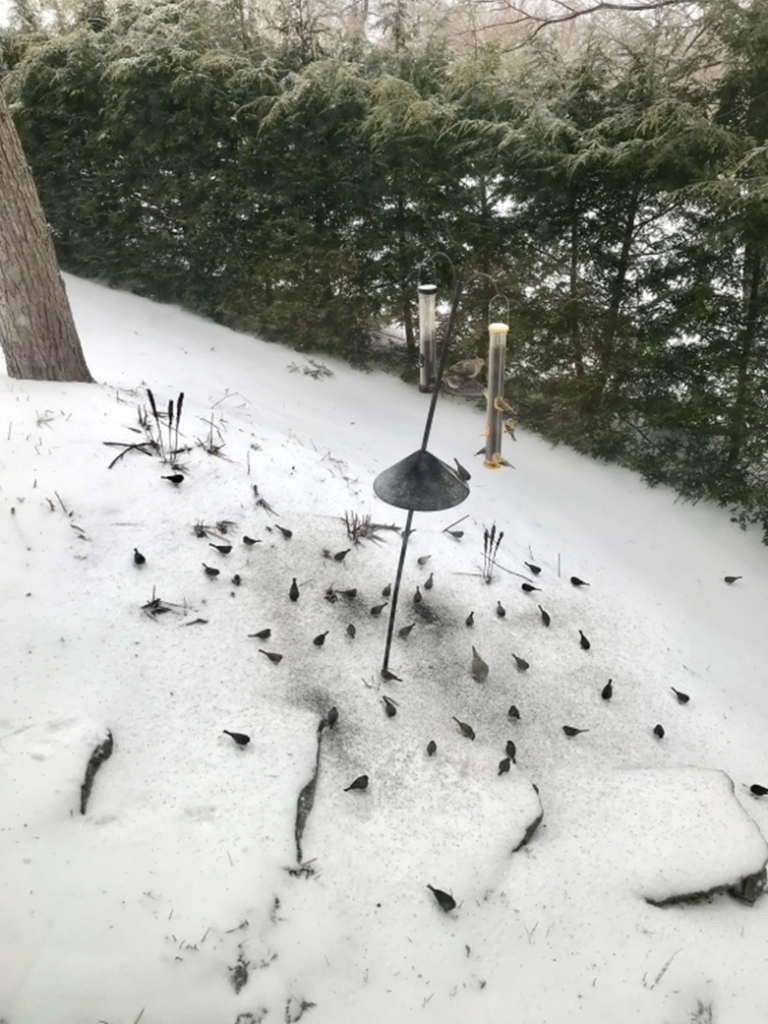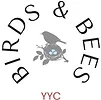LINK TO PDF NEWSLETTER DOWNLOAD

Dark-eyed juncos are birds of the ground. They hop around the bases of trees and shrubs in forests or venture out onto lawns looking for fallen seeds. You’ll often hear their high chip notes, given almost absent-mindedly while foraging or intensifying as they take short, low flights through cover.
The Dark-eyed junco has a cute nickname: snowbird! This is because a junco bird seems to bring snowy winter weather on its wings as it migrates. In colder months they travel in flocks of 15 to 25 from northern evergreen forests to backyards all over the U.S. and Canada.
When it’s cold outside, Juncos grow down jackets. The coat of feathers on a Junco bird is 30% heavier in winter than in the summer.
Both males and females are similar in size and colour. It takes careful observation and some patience to distinguish between a male and a female. Female Dark-eyed juncos have thinner necks because they lack the bulging neck feathers that males have.
There is a huge range of geographic variation in the Dark-eyed junco. Among the 15 described races, six forms are easily recognizable in the field and five used to be considered separate species until the 1980s. A field guide is the best place to look for complete illustration of ranges and plumages, but in general there are two widespread forms of the Dark-eyed junco; “slate-coloured” junco of the eastern United States and most of Canada, which is a smooth gray above, and “Oregon” junco, found across much of the western U.S. with a dark hood, warm brown back and rufous flanks. Other more restricted variations include the slate-coloured like “white winged” and Oregon-like “pink-sided” juncos of the Rockies and western Great Plains; and the Yellow-eyed junco-like “red backed” and “gray-headed” juncos of the Southwest.
